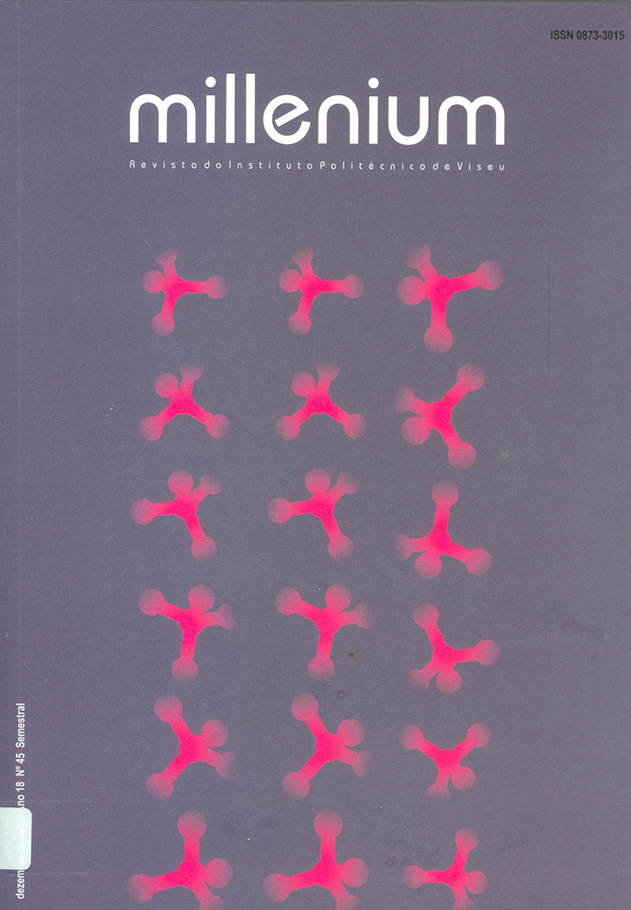Tecnologia de Games e Reabilitação Virtual: Adaptação do Software Labview para Captura de Dados do Wii Balance Board.
Keywords:
jogos de vídeo, tecnologia, avaliação, reabilitação virtuaAbstract
O objetivo do presente trabalho foi discutir e
demonstrar a adaptação do software LabView para leitura e
quantificação dos dados gerados a partir do acessório Wii
Balance Board, com foco na avaliação do equilíbrio estático.
Foram utilizados o acessório Balance Board (BB), do
Nintendo Wii Fit, um notebook, o programa LabView versão
11.0, e um software ajustado em sua programação
especificamente para o uso do BB. A captura dos dados com o
uso do LabView ocorreu durante a avaliação do equilíbrio
estático de 80 crianças em idade escolar, entre os 7 e os 14
anos, utilizando-se o acessório BB como instrumento. Os
dados gerados pelo equipamento foram trabalhados
posteriormente para organização da forma de captura. Para
este estudo foi realizada uma calibração através de testes para
verificação das grandezas envolvidas no processo de medidas
dos deslocamentos dos Eixos X e Y e dos sensores left, right,
top e bottom no BB. Para a interpretação dos dados gerados
pelo feedback do BB, foi utilizado e adaptado um software
livre operado pelo programa LabView 11.0. Os resultados
encontrados nesse estudo demonstram que o equipamento
acessório BB pode ser utilizado como instrumento de coleta de
dados para o equilíbrio estático em crianças e adolescentes.
Este modelo de avaliação pode fornecer dados precisos, tal
qual outros equipamentos considerados como padrão ouro
para medidas de equilíbrio, como a plataforma de força, em
um contexto lúdico e com menor custo de implementação.
Downloads
References
• Aimonetti, M. (2009). Intérêt de la Wii pour les personnes âgées: oui à la Wii! NPG Neurologie –
Psychiatrie – Gériatrie, 9(50): 63-64.
• Brasil, Ciência e Tecnologia: Software Livre. [Consultado em: 25/03/2013] Disponível em:
http://www.brasil.gov.br/sobre/ciencia-e-tecnologia/software-livre
• Clark, R. A.; Bryant, A. L.; Pua, Y.; McCrory, P.; Bennell, K. & Hunt, M.(2010). Validity and reliability of
the Nintendo Wii Balance Board for assessment of standing balance. Gait & Posture, 31:307-310.
• Deutsch, J. E.; Boberly, M.; Filler, J.; Huhn, K. & Guarrera-Bowlby, P. (2008). Use of a low-cost, commercially available gaming console (Wii) for rehabilitation of an adolescent with cerebral palsy.
Physical Therapy, 88(10): 1196-1207.
• Dias, R. S.; Sampaio, I. L. A. & Taddeo, L. S. (2009) Fisioterapia x Wii: a introdução do lúdico no processo
de reabilitação de pacientes em tratamento fisioterápico. In: BRASILIAN SYMPOSIUM ON GAMES
AND DIGITAL ENTERTAINMENT. Rio de Janeiro. [ Consultado em: 05/05/2011] Disponível em:
<http://www.sbgames.org/papers/sbgames09/culture/short/cults8_09.pdf>.
• Flynn, S.; Palma, P. & Bender, A. (2007). Feasibility of using the Sony PlayStation 2 gaming platform for
an individual poststroke: a case report. Journal of Neurologic Physical Therapy, 31: 180-189.
• Griffiths, M. (2003). The therapeutic use of videogames in childhood and adolescence. Clinical Child
Psychology and Psychiatry, 8(4): 547-554.
• Kenyon, R. V.; Leigh, J. & Keshner, E. A. (2004). Considerations for the future development of virtual
technology as a rehabilitation tool. Journal of NeuroEngineering and Rehabilitation, 1(12).
DOI:10.1186/1743-0003-1-13
• National Instruments Brasil. [Consultado em: 22/06/2011]. Disponível em: http://brasil.ni.com/produtos/labview
• Nintendo. [Consultado em: 19/11/2010]. Disponível em: http://wiiportal.nintendo-europe.com/15735.html
• Nintendo, Operations Manual [Consultado em: 25/03/2013] Disponível em:
http://www.nintendo.com/consumer/downloads/wiiBalanceBoard.pdf
• Pigford, T. & Andrews, A. W. (2010). Feasibility and benefit of using the Nintendo Wii Fit for balance
rehabilitation in an elderly patient experiencing recurrent falls. Journal of Student Physical Therapy
Research, 2(1): 12-19.
• Rahman, S. A. R. A. (2010). Efficacy of virtual reality-based therapy on balance in children with down
syndrome. World Applied Sciences Journal, 10(3): 254-261.
• Rand, D.; Kizony, R. & Weiss, P. T. L. (2008). The Sony Playstation II Eye Toy: low cost virtual reality for
use in rehabilitation. Journal of Neurologic Physical Therapy, 32: 155-163.
• Romano, R. G. (2012) Utilização do Nintendo Wii-Fit Balance Board como instrumento de avaliação do
equilíbrio estático. Dissertação (Mestrado em Distúrbios do Desenvolvimento) – Centro de Ciências
Biológicas e da Saúde, Universidade Presbiteriana Mackenzie, São Paulo. [Consultado em: 25/03/2013]
Disponível em:
http://tede.mackenzie.com.br//tde_busca/arquivo.php?codArquivo=2604
• Shih, C-H.; Shih, C-T. & Chiang, M-S. (2010). A new standing posture detector to enable people with
multiple disabilities to control environmental stimulation by changing their standing posture through a
commercial Wii Balance Board. Research in Developmental Disabilities, 31: 281-286.
• Weiss, P. L.; Rand, D.; Katz, N. & Kzony, R. (2004). Video capture virtual reality as a flexible and effective
rehabilitation tool. Journal of NeuroEngineering and Rehabilitation, 1(12). DOI:10.1186/1743-0003-1-12.
Downloads
Published
How to Cite
Issue
Section
License
Authors who submit proposals for this journal agree to the following terms:
a) Articles are published under the Licença Creative Commons (CC BY 4.0), in full open-access, without any cost or fees of any kind to the author or the reader;
b) The authors retain copyright and grant the journal right of first publication, allowing the free sharing of work, provided it is correctly attributed the authorship and initial publication in this journal;
c) The authors are permitted to take on additional contracts separately for non-exclusive distribution of the version of the work published in this journal (eg, post it to an institutional repository or as a book), with an acknowledgment of its initial publication in this journal;
d) Authors are permitted and encouraged to publish and distribute their work online (eg, in institutional repositories or on their website) as it can lead to productive exchanges, as well as increase the impact and citation of published work
Documents required for submission
Article template (Editable format)















